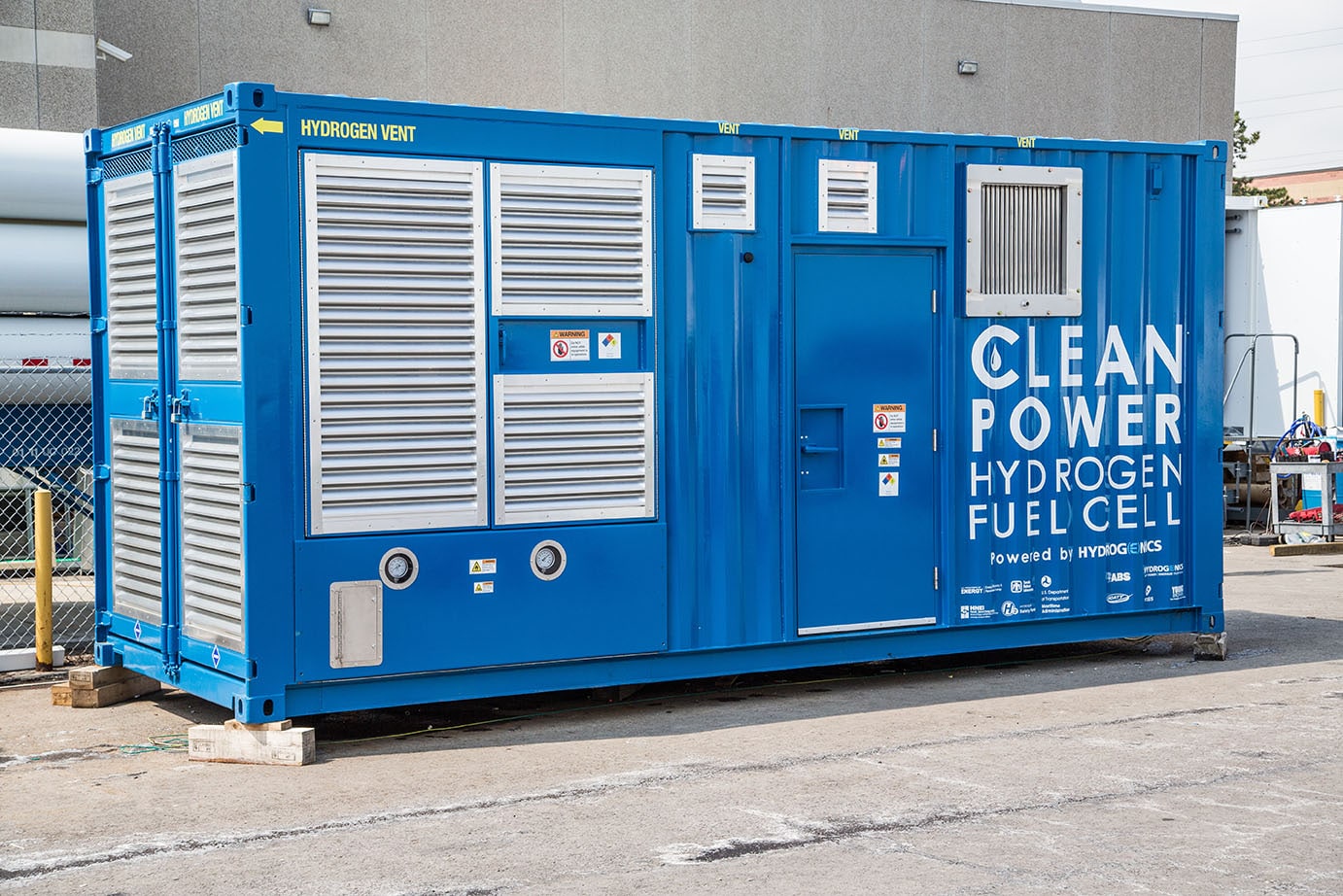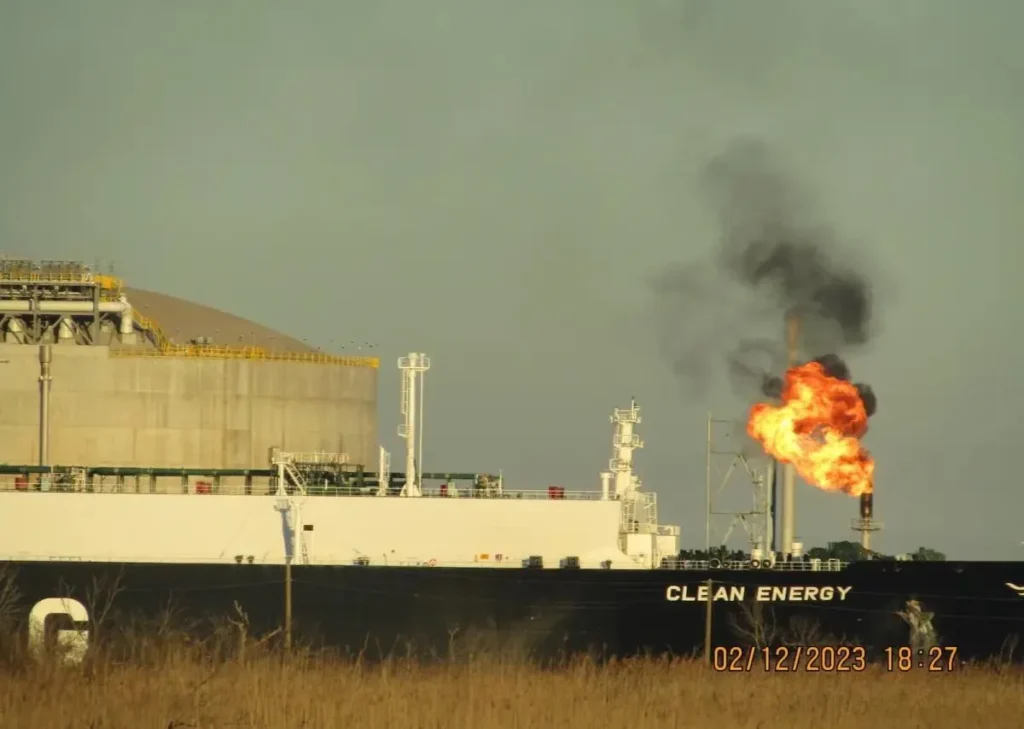As global efforts to ramp up the hydrogen industry gain support with big government subsidies, new research casts increasing doubt on the climate credentials of the main recipient of that support, so-called “blue” hydrogen, which is extracted from natural gas and paired with carbon capture technology.
Hydrogen, an energy carrier proposed for helping transition the world away from fossil fuels, is well-suited for the oil and gas industry’s public relations machine. The industry, a major player in the main lobbying group, the Hydrogen Council, can run ads and talk about moving toward green hydrogen, which is produced from water using renewable energy, while working in the interim to get the world hooked on blue hydrogen. Blue hydrogen is made from natural gas, which is mostly methane, using electricity generated by burning more gas, and hydrogen is considered “blue” (rather than “gray”) when its carbon emissions are sequestered. The process uses lots of energy and releases carbon dioxide, plus, the natural gas supply chain is known to leak the powerful greenhouse gas methane.
But talking about green hydrogen publicly while making plans to produce blue hydrogen can be misleading. And research is revealing that despite claims that blue hydrogen is a “clean fuel,” the climate impacts don’t stack up.
A study published August 12 by Robert Howarth, a biogeochemist at Cornell University, and Mark Jacobson, an environmental engineering professor at Stanford University, concludes that blue hydrogen might actually be worse for the climate than simply burning natural gas in a power plant. A main driver, they found, comes from the well-known methane emissions leakage problem associated with fracked gas, which goes up when powering energy-intensive carbon capture technology with more gas. And that likely doesn’t take into account unrelated new research showing that the oil industry continues to underreport its methane emissions by a wide margin to the U.S. Environmental Protection Agency.
The Gas Industry’s New Bridge Fuel?
Even before Howarth and Jacobson’s new study, there were other reasons to question the gas industry’s sudden embrace of blue hydrogen — many of which DeSmog summarized earlier this year.
The natural gas industry tried for years, with considerable success, to sell the idea to politicians and the public that fossil fuel gas was “clean” because it burned cleaner than coal and that it represented a bridge fuel as part of the global effort to reduce carbon emissions. However, research continues to build showing that methane emissions associated with producing natural gas — which consists mostly of methane — are higher than previously thought; when researchers account for the full methane emissions from wellhead to power plant, natural gas comes out potentially as polluting as coal. Now the industry appears to be taking the same approach with blue hydrogen — made from fossil fuel gas and reliant on expensive and energy-hungry carbon capture and sequestration (CCS) technology, which has not proven to be economically or technically viable.
The United Kingdom is one of the countries leading efforts to support a future hydrogen-based economy, and this month it announced a new national plan to achieve that goal, backed by $1.25 billion in funding. The Guardian recently noted that the UK’s Climate Change Committee is promoting a low carbon “blue hydrogen bridge” where blue hydrogen could “play a role in supplementing green hydrogen over the near-term.”
However, current global efforts — the ones governments are subsidizing — are planning to use blue hydrogen for decades, with the potential to begin using some green hydrogen in a decade or two.
“This is a new version of the ‘bridge fuel’ argument that the oil & gas industry was promoting so heavily a decade ago,” Howarth explained to DeSmog via email.
Like the old bridge fuel argument, blue hydrogen becomes a way for the gas industry to keep the public using its products in the name of a clean energy economy, while doing little to address emissions in reality.
“[Blue hydrogen is] a form of energy laundering. You take fracked gas and you turn it into something where at the point of use, where it is visible to most people, you say, ‘What’s the harm? What’s the pollution?’” Basav Sen, climate policy project director at the Institute for Policy Studies, told DeSmog. “But where does it come from? It’s dirty energy at [the] source. It’s fracked methane.”
The Hydrogen Council did not respond to a request for comment on the new research claiming blue hydrogen may be worse for the climate than using natural gas for power generation.
A Public Bailout of the Natural Gas Industry
As Howarth and Jacobson’s recent analysis shows, blue hydrogen’s emissions do not match up with the clean fuel language being promoted on the websites and social media of energy companies such as Shell, Equinor, and RWE. And the oil and gas industry is already pushing back against Howarth and Jacobson’s conclusions.
At the same time, governments around the world are starting to subsidize blue hydrogen and carbon capture to the tune of billions of dollars. Instead of a benefit to the climate, the result may end up bailing out the gas industry by locking in future demand for its main product with the help of taxpayer funds.
“This is about developing fossil fuel infrastructure and not about anything relating to clean energy development,” Jim Walsh, a senior energy policy analyst for Food & Water Watch, told DeSmog.
Signs of this are evident in some of the funding to support hydrogen projects. The U.S. infrastructure bill recently passed by the Senate has $9.5 billion dedicated to hydrogen. That includes money to create “regional clean hydrogen hubs,” with two planned in areas of the country that produce fracked gas. A third hub will be powered by nuclear energy and the fourth will use renewables.
As University of Cincinnati environmental scientist Amy Townsend-Small told DeSmog, such funding also makes major assumptions that the technologies needed to make blue hydrogen a reality, like carbon capture and storage, will be available on a commercial scale, something that isn’t a current reality and may never be.
“Blue hydrogen would allow the natural gas industry to continue to produce and wait for regulations and/or technology to catch up for CO2 storage,” Townsend-Small said.
The U.S. gas industry is quickly embracing the idea of blue hydrogen, with several new projects recently announced. This week in North Dakota, two energy companies announced plans to convert a synthetic natural gas plant into a new blue hydrogen facility. Blue hydrogen is also the plan in Corpus Christi, Texas, where a refinery will shift to producing blue hydrogen. The Texas facility will then sell the blue hydrogen to refineries to produce more refined petroleum products — an extreme form of what Basav Sen refers to as “energy laundering.”
But not everyone in the hydrogen industry is on board with the current direction and financial challenges remain. After the release of the UK’s hydrogen plan, Chris Jackson, chair of the UK Hydrogen and Fuel Cell Association, resigned due to the plan’s focus on blue hydrogen, which he called an “expensive distraction.” He also said oil companies made “false claims” to the UK government about the true cost of producing blue hydrogen, saying it was cheap and would soon make a profit but at the same time trying to drum up billions in subsidies over the next 25 years. The UK plan also is considering a guaranteed price for hydrogen producers so that they “do not have to sell to consumers at a loss,” according to The Telegraph.
Chair of the UK Hydrogen and Fuel Cell Association @UKHFCA has stepped down, saying he's no longer able to advocate in good faith on behalf of 'blue' hydrogen, made using fossil fuel gas and carbon capture technology https://t.co/nVyMWIESNh
— Hiroko Tabuchi (@HirokoTabuchi) August 18, 2021
Japan promoted hydrogen heavily during the recent Tokyo Olympics as part of its ambitious but halting hydrogen energy plans, but those currently rely on importing hydrogen made with coal power in Australia.
A new analysis of hydrogen’s potential in Latin American countries from the International Energy Administration uses the phrase “low carbon hydrogen,” yet notes that the “main route” to producing it is “coupling conventional technologies with carbon capture, utilisation and storage (CCUS)” — which is another way to say blue hydrogen.
“Rather than spending billions of dollars in taxpayer money in a technology that will clearly extend a lifeline to the fossil fuel industry and further lock them in to our economic future,” Walsh of Food and Water Watch said, “We should be really evaluating whether or not this is a practical solution to some of the climate crises we have.”
Selling Every Last Molecule of Hydrocarbons
The gas industry is facing pressure on several fronts, from climate concerns to changing economics that favor renewables. Japan recently announced plans to reduce its use of liquefied natural gas (LNG) by nearly 40 percent by 2030.
Spain just announced plans to replace gas power with renewables in part because the recent global spike in natural gas prices resulted in record high energy prices in Europe. The switch to renewables in Spain is expected to lower consumer electricity prices by 58 percent by 2025.
Spain’s 🇪🇸 Answer to High Power Prices >> Build out more #Renewable Energy ☀️⚡️🔋 https://t.co/5yGRiXcuR2 #EnergyTransition
— Carbon Tracker (@CarbonBubble) August 17, 2021
With such constraints, the gas industry’s embrace of blue hydrogen is understandable because it represents a huge new market.
Saudi Arabia exerts great influence over global energy markets, and a recent study by an energy research nonprofit touted the country as having the potential to become a global leader in green hydrogen.
And while Amin Nasser, CEO of Saudi Aramco, has expressed interest in green hydrogen, he revealed on an August investor call where the national oil company’s focus will be: blue hydrogen.
“We are in discussions with major markets [such as] Japan and Korea, in terms of demand for blue hydrogen. And as the markets grow, it will increase the opportunity for us to produce more blue hydrogen for export markets,” Nasser said on an investor phone call as reported by The National News.
In July, Bloomberg reported that Saudi Energy Minister Prince Abdulaziz bin Salman, described as “the most powerful man in petroleum,” was crystal clear about Saudi plans for oil and gas production.
“We are still going to be the last man standing,” Abdulaziz said, “And every molecule of hydrocarbon will come out.”
Subscribe to our newsletter
Stay up to date with DeSmog news and alerts







